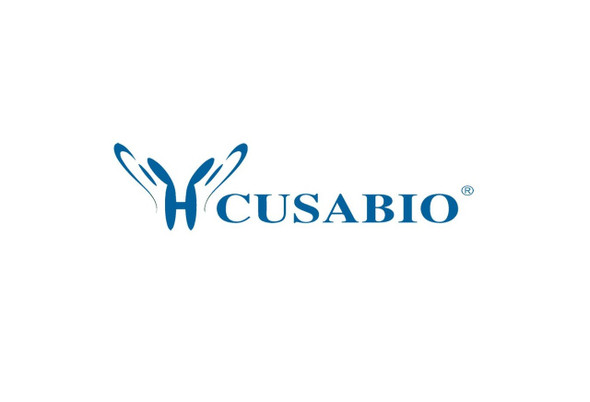Cusabio Mycobacterium tuberculosis Recombinants
Recombinant Mycobacterium tuberculosis Diacylglycerol acyltransferase/mycolyltransferase Ag85A (fbpA) | CSB-EP358584MVZ
- SKU:
- CSB-EP358584MVZ
- Availability:
- 3 - 7 Working Days
Description
Recombinant Mycobacterium tuberculosis Diacylglycerol acyltransferase/mycolyltransferase Ag85A (fbpA) | CSB-EP358584MVZ | Cusabio
Alternative Name(s): DGAT(Acyl-CoA:diacylglycerol acyltransferase) (Antigen 85 complex A) (85A) (Ag85A) (Fibronectin-binding protein A) (Fbps A) (mpt44)
Gene Names: fbpA
Research Areas: Microbiology
Organism: Mycobacterium tuberculosis (strain CDC 1551 / Oshkosh)
AA Sequence: FSRPGLPVEYLQVPSPSMGRDIKVQFQSGGANSPALYLLDGLRAQDDFSGWDINTPAFEWYDQSGLSVVMPVGGQSSFYSDWYQPACGKAGCQTYKWETFLTSELPGWLQANRHVKPTGSAVVGLSMAASSALTLAIYHPQQFVYAGAMSGLLDPSQAMGPTLIGLAMGDAGGYKASDMWGPKEDPAWQRNDPLLNVGKLIANNTRVWVYCGNGKPSDLGGNNLPAKFLEGFVRTSNIKFQDAYNAGGGHNGVFDFPDSGTHSWEYWGAQLNAMKPDLQRALGATPNTGPAPQGA
Source: E.coli
Tag Info: N-terminal 6xHis-SUMO-tagged
Expression Region: 44-338aa
Sequence Info: Full Length of Mature Protein
MW: 44.6 kDa
Purity: Greater than 85% as determined by SDS-PAGE.
Relevance: The antigen 85 proteins are responsible for the high affinity of mycobacteria for fibronectin, a large adhesive glycoprotein, which facilitates the attachment of M.tuberculosis to murine alveolar macrophages. They also help to maintain the integrity of the cell wall by catalyzing the transfer of mycolic acids to cell wall arabinogalactan, and through the synthesis of alpha,alpha-trehalose dimycolate. They catalyze the transfer of a mycoloyl residue from one molecule of alpha,alpha-trehalose monomycolate to another TMM, leading to the formation of TDM. FbpA mediates triacylglycerol formation with long-chain acyl-CoA as the acyl donor and 1,2-dipalmitoyl-sn-glycerolas the acyl acceptor.
Reference: "Whole-genome comparison of Mycobacterium tuberculosis clinical and laboratory strains." Fleischmann R.D., Alland D., Eisen J.A., Carpenter L., White O., Peterson J.D., DeBoy R.T., Dodson R.J., Gwinn M.L., Haft D.H., Hickey E.K., Kolonay J.F., Nelson W.C., Umayam L.A., Ermolaeva M.D., Salzberg S.L., Delcher A., Utterback T.R. Fraser C.M. J. Bacteriol. 184:5479-5490(2002)
Storage: The shelf life is related to many factors, storage state, buffer ingredients, storage temperature and the stability of the protein itself. Generally, the shelf life of liquid form is 6 months at -20?/-80?. The shelf life of lyophilized form is 12 months at -20?/-80?.
Notes: Repeated freezing and thawing is not recommended. Store working aliquots at 4? for up to one week.
Function:
Involvement in disease:
Subcellular Location:
Protein Families:
Tissue Specificity:
Paythway:
Form: Liquid or Lyophilized powder
Buffer: If the delivery form is liquid, the default storage buffer is Tris/PBS-based buffer, 5%-50% glycerol. If the delivery form is lyophilized powder, the buffer before lyophilization is Tris/PBS-based buffer, 6% Trehalose, pH 8.0.
Reconstitution: We recommend that this vial be briefly centrifuged prior to opening to bring the contents to the bottom. Please reconstitute protein in deionized sterile water to a concentration of 0.1-1.0 mg/mL.We recommend to add 5-50% of glycerol (final concentration) and aliquot for long-term storage at -20?/-80?. Our default final concentration of glycerol is 50%. Customers could use it as reference.
Uniprot ID: P9WQP2
HGNC Database Link: N/A
UniGene Database Link: N/A
KEGG Database Link: N/A
STRING Database Link: N/A
OMIM Database Link: N/A






